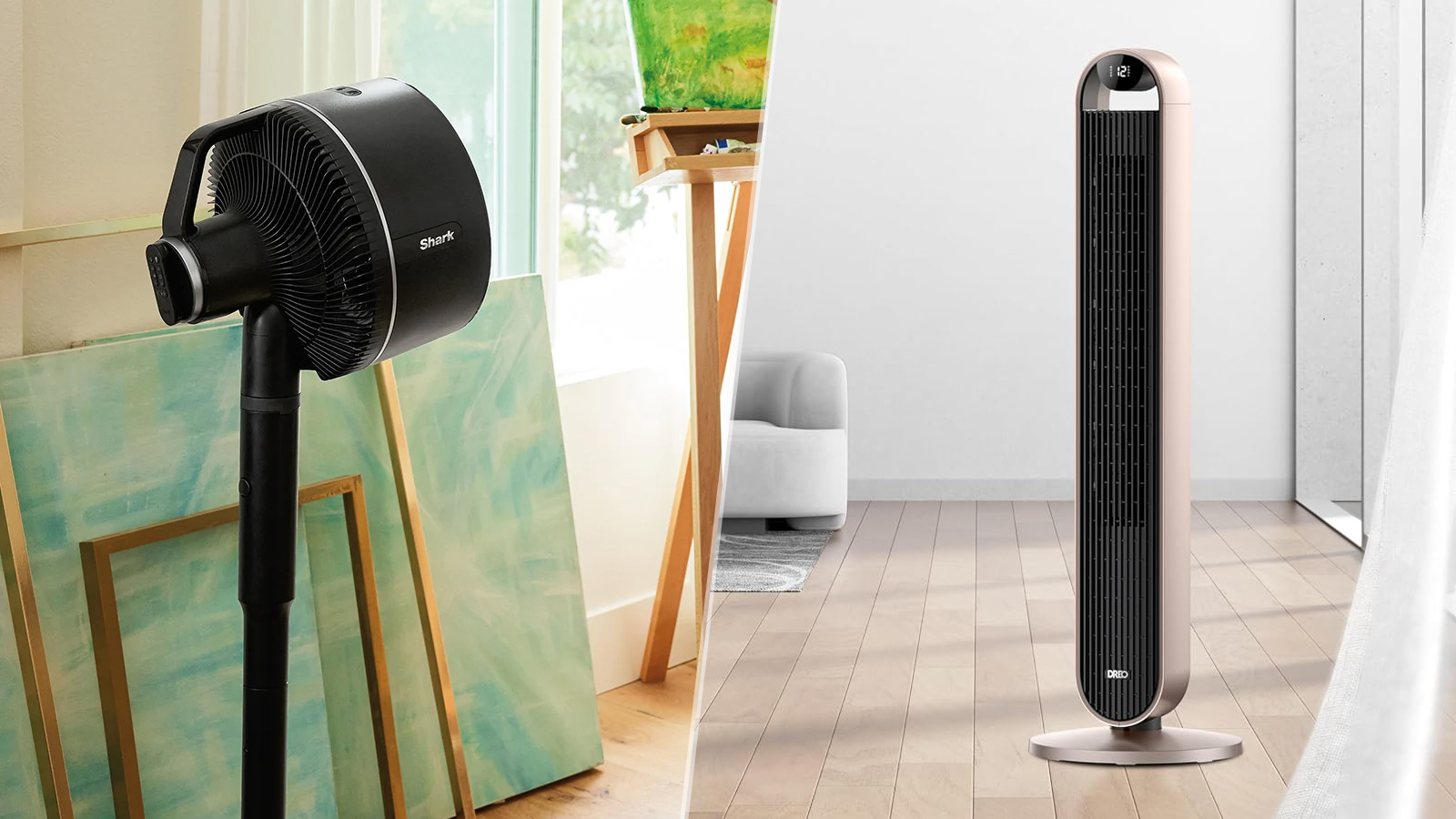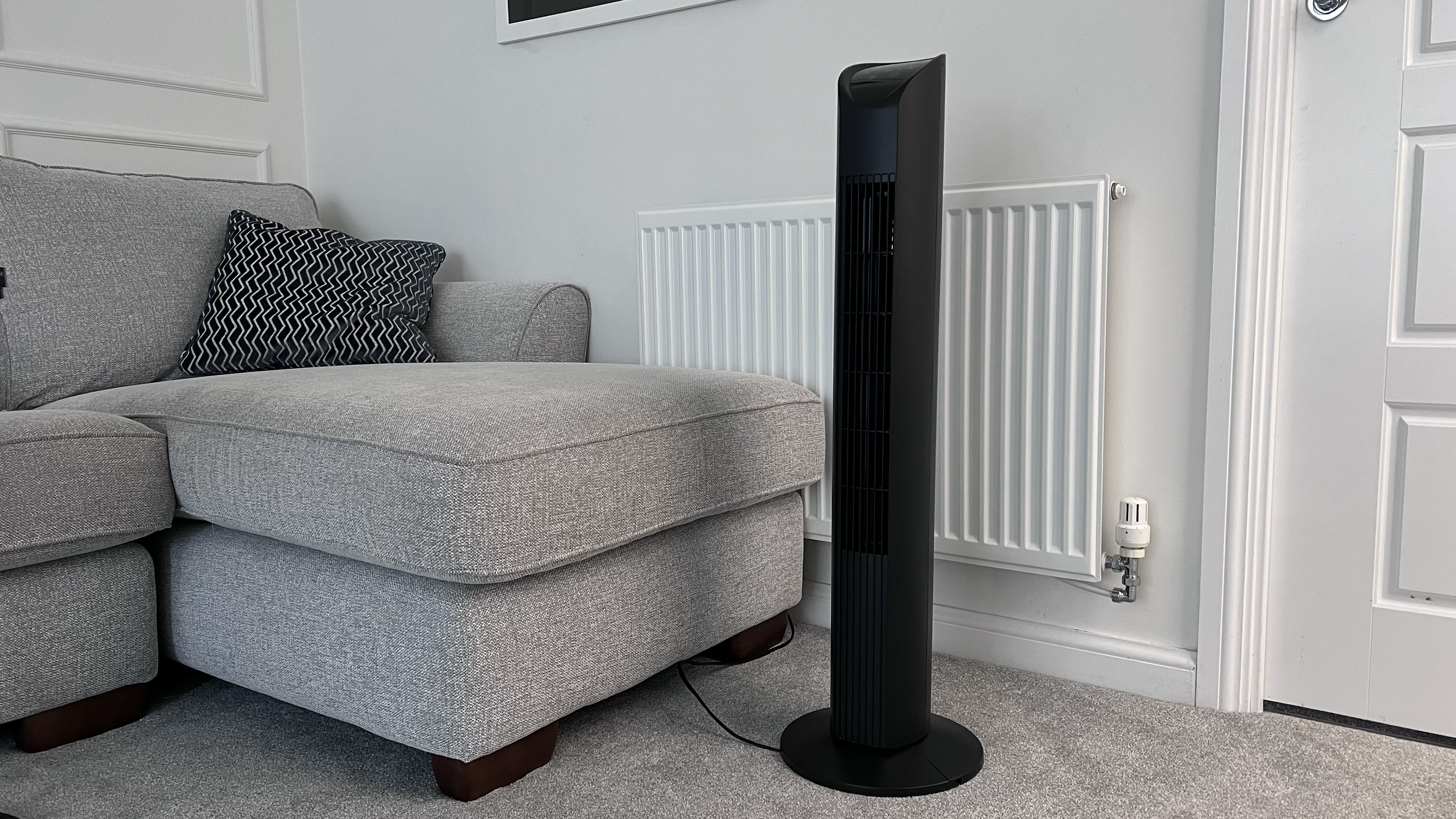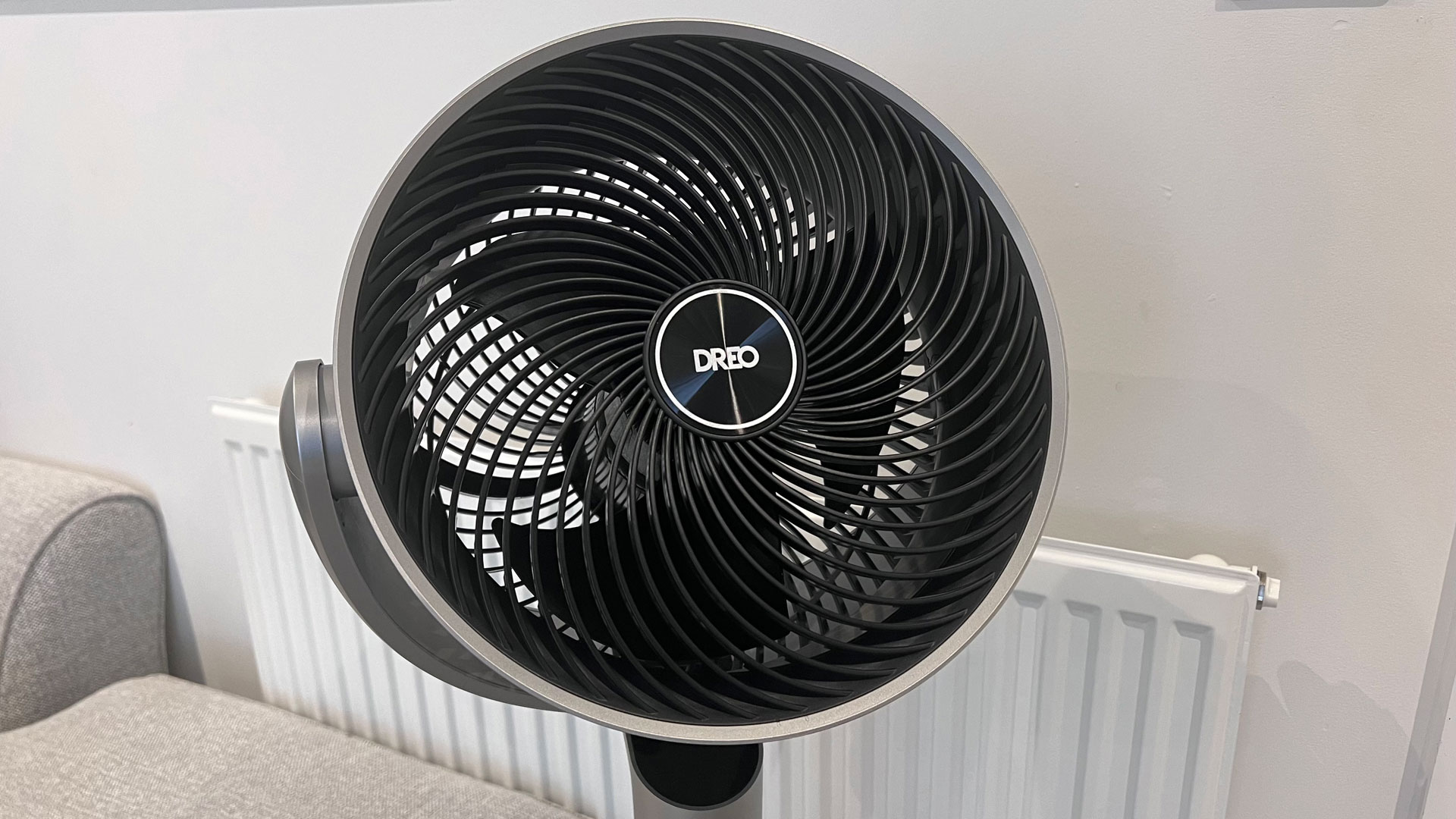
Want to stay cool when the weather's hot? Two popular options are tower fans and pedestal fans, but each comes with its own benefits and drawbacks. So which is the best fan for your purposes?
A tower fan is a tall, slim cooling device that circulates air efficiently in rooms. It uses internal vertical blades to draw in air from the base, accelerate it upwards, and expel it through a long vertical vent. An example is the Dreo Pilot Max (pictured above, right).
A pedestal fan, aka traditional fan, a circular fan head mounted on an adjustable stand. It features large, visible blades that rotate to move air, powered by a motor in the head. An example is the Shark FlexBreeze (pictured above, left).
Basic, mid-price and premium models of tower and pedestal fans generally cost around the same. So which should you buy? Read on as we compare tower fans and pedestal fans in key areas, to help you decide which type is best for you.
Tower fan vs pedestal fan: design & aesthetics
While you primarily buy a fan to keep cool, it's also a piece of furniture and you want it to look nice, and fit in with the rest of your room. So it's worth thinking about aesthetics first of all.
As the name suggests, tower fans have a sleek, vertical design that takes up minimal floor space. Their slim profile allows them to fit easily into corners or narrow spaces between furniture. Many tower fans have a modern, minimalist look that blends well with contemporary decor. These days some of the more advanced models, such as the Govee Smart Tower Fan, even have voice controls and app features.

Pedestal fans, meanwhile, have a circular fan head mounted on an adjustable stand. They come in a variety of styles, including basic, decorative, retro and vintage. As with tower fans, there are now sophisticated models, such as the Dreo PolyFan 704S, which can be controlled by your voice or via your phone.
If saving space is a priority, then the streamlined design of a tower fan will usually be preferable. Conversely, if you prefer a classic look, a pedestal fan will be the better option.
Tower fan vs pedestal fan: cooling & comfort
Pedestal fans typically offer more powerful airflow compared to tower fans. Their larger blades and motors are able to move a higher volume of air, making them effective at cooling you across larger spaces. The adjustable height and tilt of many pedestal fans also allows for more targeted airflow. (Remember that a fan cannot cool a room, only the people in it, so targeting is all-important. If you want something to actively cool a room, you'll need to invest in an air con unit – head to our air conditioner vs fan comparison for more on that).
In comparison, tower fans provide a more gentle, widespread breeze. While this airflow is not as forceful as a pedestal fan, it does distribute more evenly throughout a room. Many tower fans oscillate side-to-side to improve this circulation.
In short, pedestal fans are better at providing powerful, targeted airflow, especially in bigger rooms. However, tower fans are better at providing evenly distributed, ambient airflow, especially in small to medium spaces.
Tower fan vs pedestal fan: noise
Some people find the noise of fans quietly soothing, in a similar way to white noise machines. But if you're not one of them, be aware that tower fans are generally quieter than pedestal fans, especially at lower speed settings. Some even have special 'sleep' or 'quiet' modes for nighttime use.

Pedestal fans, in contrast, tend to produce more noise due to their exposed blades and more powerful motors. That said, higher-end pedestal fans are engineered to operate more quietly. And at lower speeds, noise levels between quality pedestal and tower fans can be comparable. For example, when we tested the Dreo PolyFan 704S, we were impressed with how quiet it was.
In short, if a quiet fan is a top priority, a tower fan is usually the best option. But if you still want a pedestal fan, models that specialize in quiet operation may offer the best of both worlds.
Tower fan vs pedestal fan: space & portability
Tower fans generally have a smaller footprint, usually around one square foot or less. This makes them ideal for rooms where space is at a premium. Their lightweight design also makes them easy to move from room to room as needed.
Pedestal fans require more floor space due to their wider base, typically 1.5 to 2 square feet. On the plus side, their adjustable height allows them to direct air over furniture and other obstacles, making them potentially more effective. Many larger pedestal fans also have wheels, making them easy to move around.
Tower fan vs pedestal fan: which should you buy?
Ultimately, both tower fans and pedestal fans can be effective at helping you keep cool. Tower fans excel in space efficiency, quiet operation, and modern design. Pedestal fans offer powerful airflow, adjustability, and classic styling.
When choosing between the two, consider your room size, aesthetic preferences, noise tolerance, and desired features. Carefully weigh the pros and cons of each type to determine which fan will best meet your needs and keep you cool and comfortable.
Get daily insight, inspiration and deals in your inbox
Sign up for breaking news, reviews, opinion, top tech deals, and more.
Tom May is a freelance writer and editor specialising in tech, design and sleep products. Over the years he's tested a number of mattresses, duvets and pillows, and as a back pain sufferer, has a keen interest in finding ones that offer maximum support. Plus, in running a successful Airbnb business, sleep hygiene and providing the right bedding for guests has become a big part of his day-to-day life. He is author of Great TED Talks: Creativity, published by Pavilion Books.
